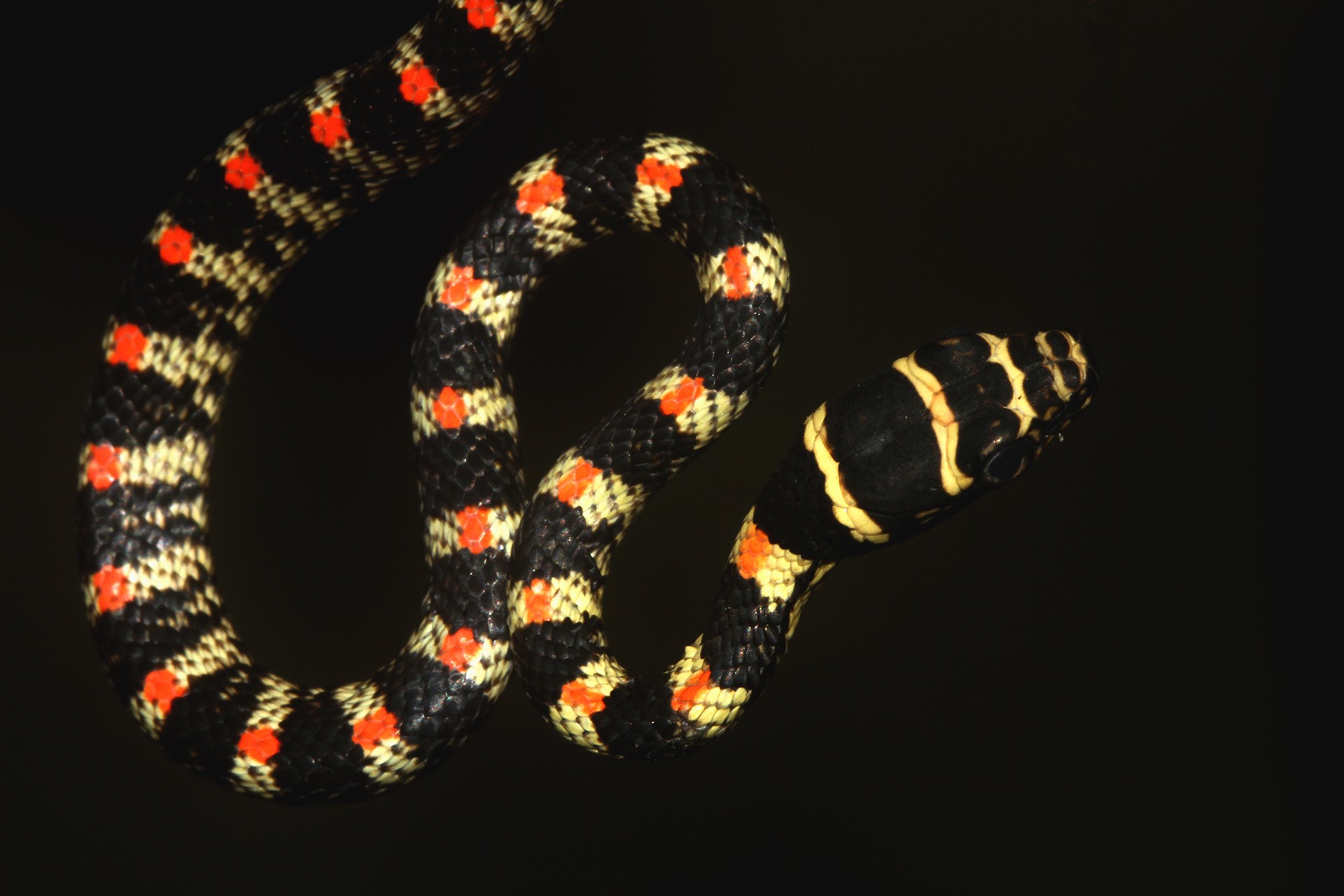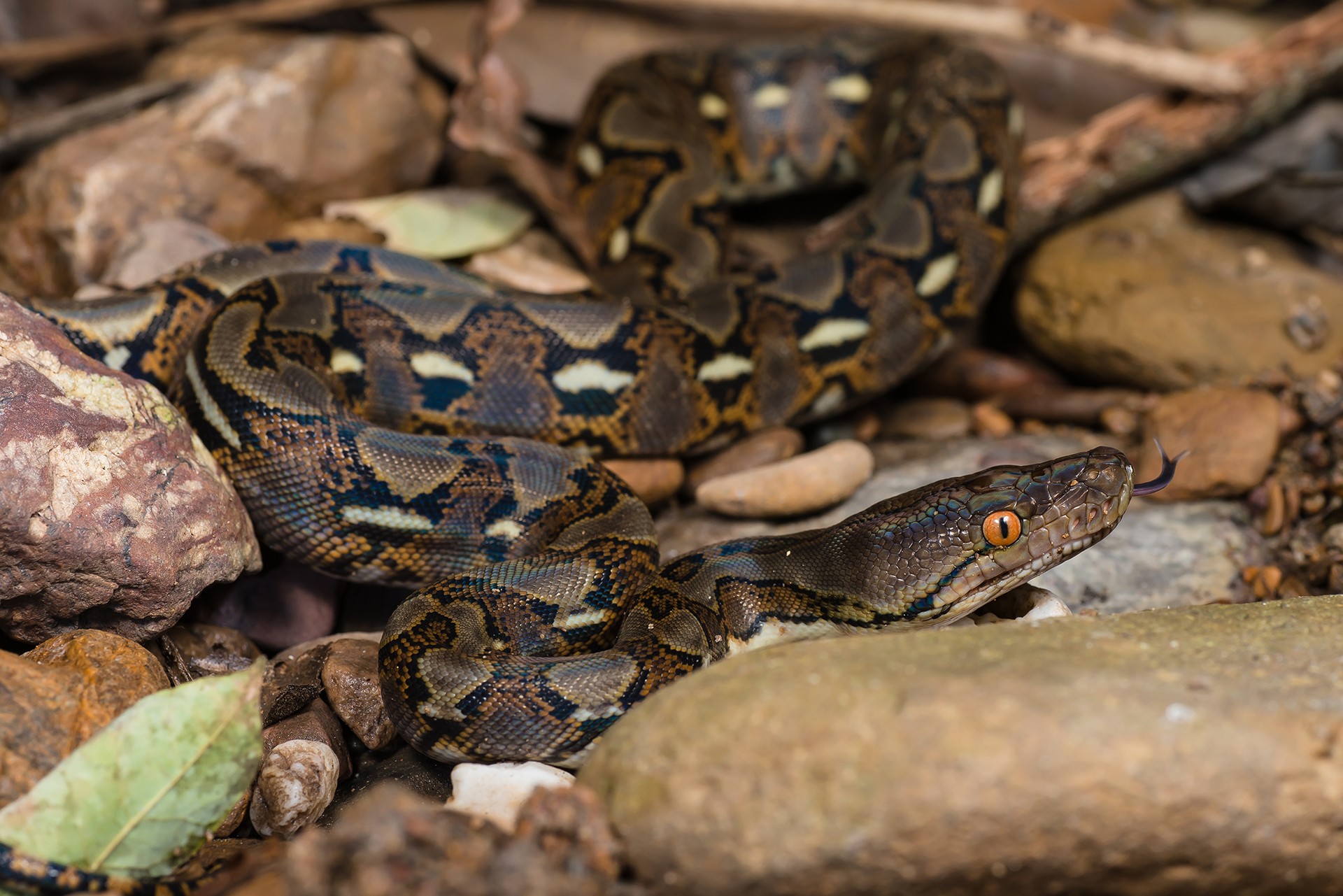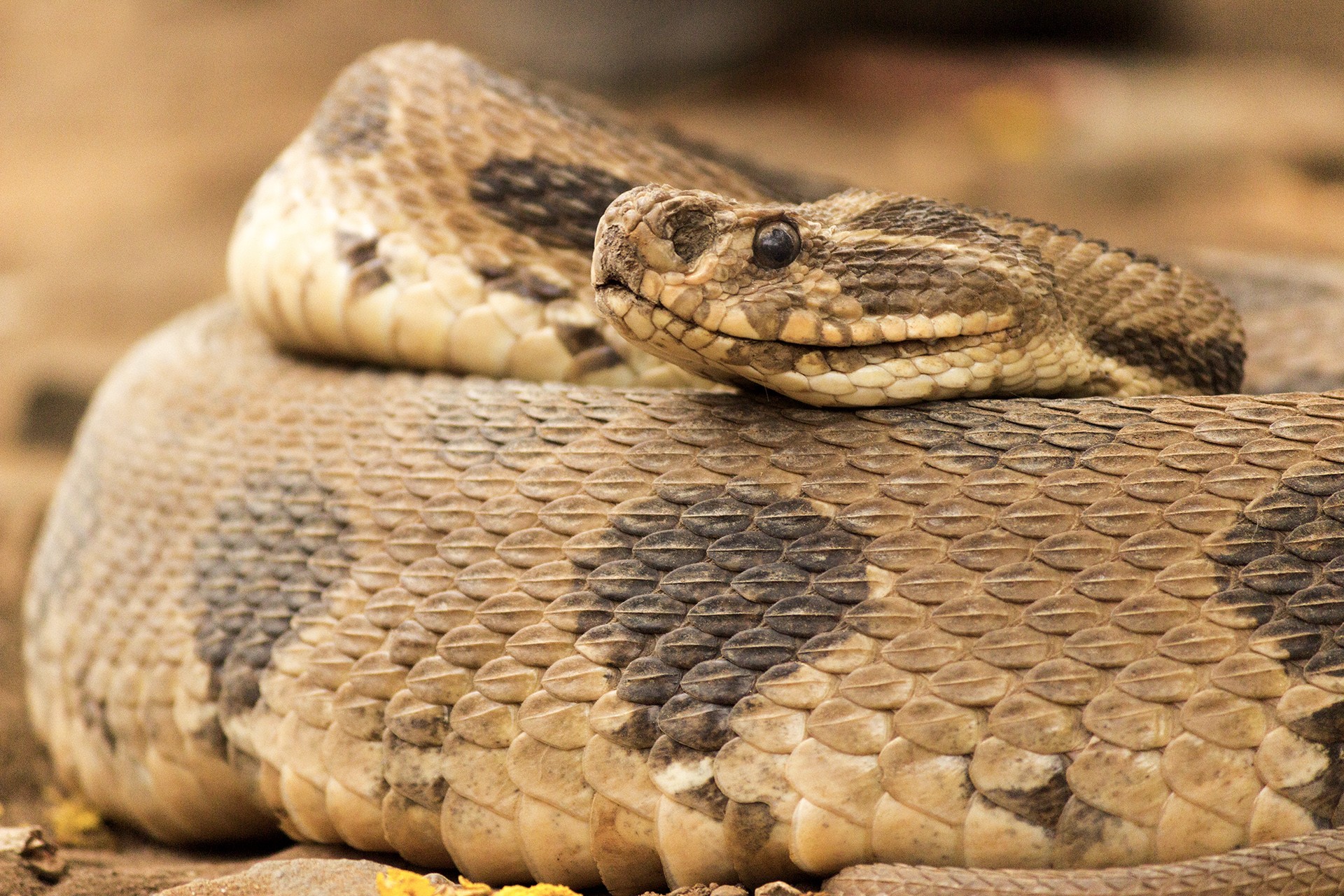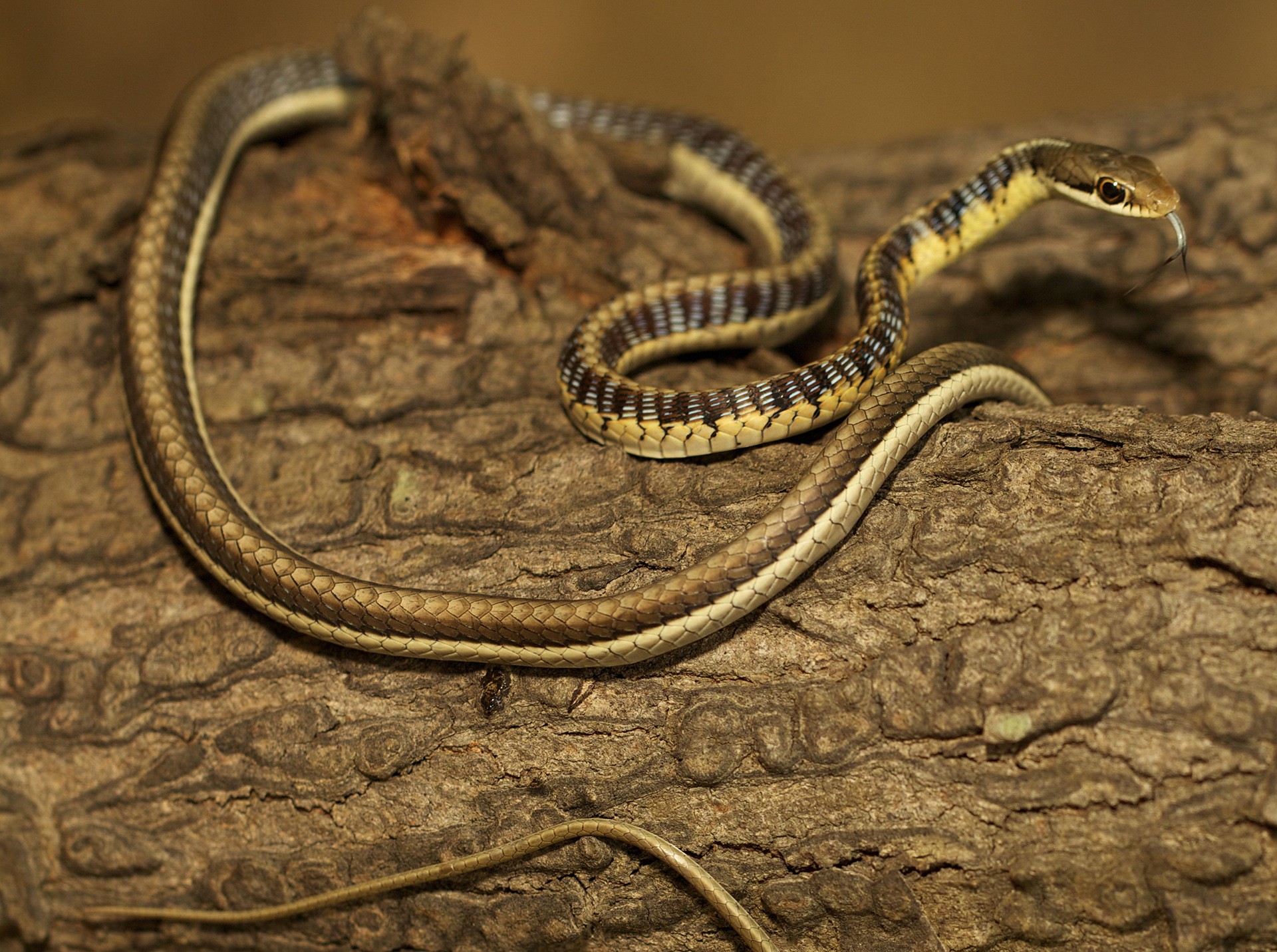Wherever I go and for as long as I can remember, I have always been asked about which snakes are the biggest, the brightest, the fastest, the most dangerous.
There are loads of theories and claims about various snakes. So, here’s my opinion. I find different species of snakes interesting for different reasons. The snake with my favourite markings would be the Ornate Flying Snake (Chrysopelea ornata). The first time I saw one, I thought it couldn’t be real! Still, despite its brightness, it is incredibly well camouflaged when it is in its natural habitat of trees.
The longest snake in India – and the world, in fact – is the Reticulated Python (Python reticulatus). Pythons that are 10 metres have been recorded. That’s about as long as a three-storey building is tall! But sadly, no snake has been found near that length for over fifty years now. It is a beautiful snake and is found in the Nicobar Islands. There have also been a few unconfirmed reports of sightings from Northeast India. It is most commonly found in parts of Southeast Asia.
There is a lot of interest in knowing which is the most dangerous snake in the world. I feel there are too many aspects to that answer. I would call the Russell’s Viper (Daboia russelii) the most dangerous snake in the world. Like all vipers, it has long foldable fangs that are extremely efficient at injecting venom. In addition to having a very strong haemotoxic venom that causes a host of complications, it also uses camouflage as its defence and predatory mechanism. Because of this, the Russell’s Viper is always difficult to spot. People often step on it or pick it up without realising. It also has a very wide distribution, making it even more significant in the global snakebite equation.
As for which snake is the fastest, many people say it is the black mamba. I would disagree. There are a lot of snakes that move at similar speeds. The one snake I have been outdone by most often is the Common Bronzeback Tree Snake (Dendrelaphis tristis). The number of times I have tried to catch it and missed is quite something! They are really fast, climb incredibly well and seem to vanish in the blink of an eye.
It is also very hard to pinpoint which species is the most rare. There are a few species known to science only from a single specimen. Nikhil’s Kukri Snake (Oligodon nikhili) is one such species. It was found in the Palani Hills by herpetologist Romulus Whitaker’s son, Nikhil, when he was a child. Now, around thirty years later, no other specimen has been found. Maybe it’s waiting for another child to root around in the same shola to be rediscovered!
Guest Editor Diaries: Of snakes, stranglers and weeds - Eight-year-old Guest Editor Avni Meda assigns stories to the NiF team.
A flappy ending – Eight-year-old Guest Editor Avni Meda writes about the time she went in search of Bar-headed Geese.
Weed this carefully – Journalist Shamsheer Yousaf explains why harmless-looking weeds are so dangerous for our forests.
Pssst! Coil up and read – Children’s book author Bijal Vachharajani picks out two books featuring our favourite slithery creatures.




